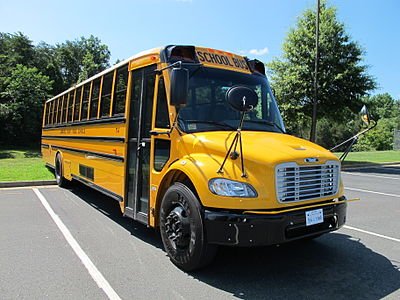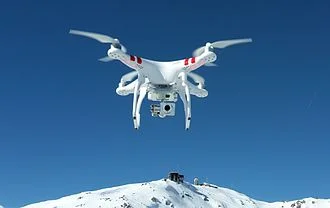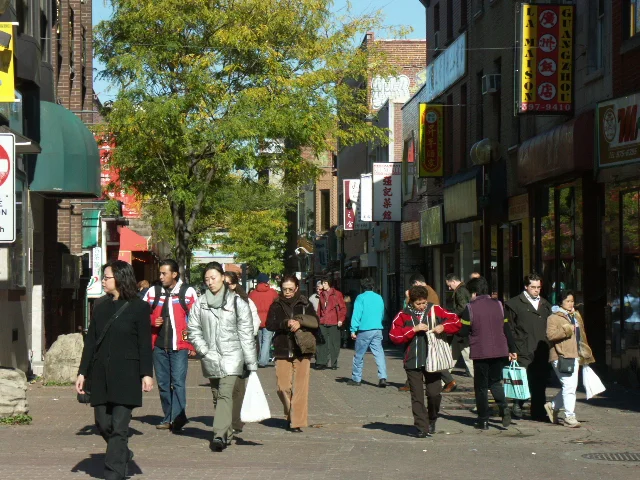
Llewellyn King: Using school buses, etc., to store energy in the new electricity revolution
WEST WARWICK, R.I.
Carbon-free electricity isn’t a final destination – it is merely a stop along the road to a time when electricity becomes the clean fuel of choice and reduces pollution in buildings, cement and steel production, transportation and other places and industries.
That is the glorious future that Arshad Mansoor, president and CEO of the Electric Power Research Institute, sees. He revealed his vision on White House Chronicle, the weekly news and public-affairs program on PBS, which I host, on his way to the COP26 summit in Glasgow, Scotland.
Mansoor, who talks about the future with an infectious fervor, was joined on the broadcast by Clinton Vince, chairman of the U.S. Energy Practice at Dentons, the globe-circling law firm, and Robert Schwartz, president of Anterix, a Woodland Park, N.J.-based firm that is helping utilities move into the digital future with private broadband networks.
Mansoor outlined a trajectory in which electric utilities must invest substantially in the near future to deal with severe weather and decarbonization. For example, he said, some power lines must be put underground and many must be tested for much higher wind speeds than were envisaged when they were installed. Some coastal power lines must be raised, he said.
While driving toward a carbon-free future, Mansoor cautioned against utilities going so fast into renewables the nation ignores the ongoing carbon-reduction programs of other industries. Further, if utilities can’t meet the electricity demands of transportation or manufacturing, these industries will turn away from the electric solution.
“Overall, we looked at the numbers and they showed a huge national role in decarbonization for the electric utility industry,” Mansoor said. However, the transition is fraught. It must be managed, sometimes using more gas until the system can be totally weaned from fossil fuels, he said. An orderly transition is vital.
Clinton Vince said the electric utility world has experienced a lot of volatility from severe weather, due to climate change, to the Covid-19 pandemic, and cyber-intrusions. “If I were to boil down to one word what is vital for utilities, it would be ‘resilience.’ ”
Resilience is an ongoing utility goal: It is the ability of a single utility or a group of utilities to bounce back from adversity, often by restoring power quickly. Anterix’s Robert Schwartz said that with his company’s private broadband networks and the deployment of enough sensors, a utility could identify a power line break in 1.4 seconds, before it hits the ground.
One of the most exciting and revolutionary aspects of Mansoor’s thinking is that the consumer will become a partner in the electric utility future. They will join the ecosystem by providing load-management assistance through smart meters, now installed in 60 percent of homes.
Mansoor thinks that the nation’s 480,000 school buses, if electrified, along with private electric vehicles, can be used to store energy. This answers the concern many utility executives have about storage and the concern that a tsunami of electric vehicles will overpower electric supply in the coming decade.
I think the utilities should plan right now for the integration of electric vehicles into their systems. They should offer electric vehicle owners financial incentives for plugging in and sending their stored power to the grid.
Likewise, the utilities should provide rate incentives for off-peak electric vehicle charging. They could do worse than look at the algorithms that have made Uber and Lyft possible, unlocking value in the personal car.
The utilities could devise a flexible system whereby they pay for power when needed and give a price break for charging during off-peak hours, or when there is a surfeit of renewable energy. That is the kind of data flow that will mark the utilities going forward and stimulate demand for private broadband networks.
We, the consumers, will be partners in the electric future, managing our own uses and supporting the grid with our electric cars and trucks. That is Mansoor’s achievable vision.
Llewellyn King is executive producer and host of White House Chronicle, on PBS. He’s based in Rhode Island and Washington, D.C.
On Twitter: @llewellynking2
White House Chronicle
Llewellyn King: Thank God for electricity, especially now; but the grid is always under threat
WEST WARWICK, R.I.
Nothing will be the same again
Those are words that that challenge the heart and the imagination. The heart because, as in a death or the loss of a job, some things will be very missed. The imagination because it needs inspired speculation to know how the present crisis will reshape the way we live; how we are governed, how we educate, how we do business and how we play.
Some losses are somewhat predictable. Most of us may never sit in a movie theater again because there may be no movie theaters. They were already having a hard time with the competition from streaming services, now many may just not reopen. Question: What will be done with those buildings? They are mostly part of shopping centers where many of the tenants for restaurants and specialty shops will also go out of business.
Here’s my answer: In that glorious time when we have licked COVID-19, many new entrepreneurs will get their start in those empty shells. A myriad of yet-unknown businesses will crop up, coming out of these times of ultra-difficulty. Failing shopping centers offer habitat to startups.
We are in a state of war and in war, despite its horror, there is invention. As we try to defeat this pandemic, there will be inventions aplenty.
War has always spurred creativity, in art and in science, and in its aftermath, a time of optimism and opportunity. Catastrophe shakes up society and reorients it. There is a high price but a great reward
Needs must, there will be a re-evaluation of values and the goods and services which are essential. High on that list will be electricity. Over and over again we will be asking ourselves if the electric grid is safe and if so, how safe?
As Morgan O’Brien, co-founder of Nextel and now CEO of Anterix, which offers utilities secure communications systems, told me, “The coronavirus pandemic is putting more stress on the infrastructure which keeps our society functioning. Critical infrastructure like the electric grid will be more stressed as it is the essential lifeline for Americans sheltering in place.”
A loss of all or part of the grid is an existential fear that has had experts worried since the first computer hackers had a go at it. Utility presidents have told me that it is grid security that keeps them awake at night. It should. CPS Energy, the utility in San Antonio, gets more than 2 million hits a day, I believe.
Late last year the president’s National Infrastructure Advisory Council warned strongly of the dangers of cyberattack. It said the electric utility industry is good at tackling small, short-term outages but it is essentially unprepared for catastrophic outages lasting a long time.
Earlier this year James Woolsey, a former CIA director and an honorary co-chair of the Secure the Grid Coalition, wrote to the Federal Energy Regulatory Commission demanding it order more physical security for transformers, pylons, etc. Woolsey cited a lack of improved physical security since that became an issue with the sophisticated disabling of Pacific Gas & Electric’s substation in Metcalf, Calif., in 2013.
John Savage, professor emeritus of computer science at Brown University, who is writing a book on cybersecurity, raises a less-mentioned dimension of threat to the grid: the role of GPS. With the advent of global positioning satellites, he explained, the utility industry switched from using atomic clocks to using GPS timing as the basis for its nationwide synchronization.
Savage told me, “Dependence on GPS for timing is a security risk. If GPS timing signals are distorted or lost, serious damage may be done to the grid.
“GPS signals can be lost due to a local jamming, blackouts, produced by a solar flare, or spoofing. A GPS anomaly alone or a cyberattack combined with one can cascade and bring down a large portion of the grid for an extended period of time.”
Gen. James Jones, a retired Marine commandant and NATO commander, told me, “For the past several years, I have been preoccupied by the proximity of threats, particularly in the cyber realm.”
Much will change, but the need for reliable electricity will remain paramount.
Llewellyn King is executive producer and host of White House Chronicle, on PBS. His email is llewellynking1@gmail.com, and he’s based in Rhode Island and Washington, D.C.
Llewellyn King: Watch out for drone invasion of cities
WEST WARWICK, R.I.
There is a push to commercialize drones that equals any gold rush. Hundreds of drone makers, drone service companies and drone management firms are creating new machines, divining new uses, and planning to increase the penetration of their devices or services in a marketplace that is burgeoning. Although dominated by DJI, the giant Chinese drone company with seven locations in the United States alone, there are hundreds of drone companies keen to get in on the action.
The drone takeover of the skies is not a thing of science fiction and Popular Mechanics anymore. It is real and it has begun. Soon the skies in cities will be getting as crowded as the highways of Washington and Los Angeles.
In the world of drones, the big struggle now is to increase the payloads. But the real value maybe in their ability to collect and process huge amounts of data – an essential part of the “smart cities” of the future. Former Intel CEO Brian Krzanich said data is the new oil and drones are the new oil wells.
Drones and autonomous vehicles are destined to be integral to smart cities, with different entrants pursing different goals. Uber Eats wants dinners for families of four to be wafted aloft by drones. Amazon wants drones that can carry loads of various sizes and shapes. Google wants to own the control technology.
Everyone wants the data.
City managers, police departments, motor vehicle departments and first responders want data. Marketers and homebuilders want data about how we live and travel -- and even what we do when we are not between working and getting home.
Smart cities will run on data and drones will be part of the data-acquisition infrastructure. Morgan O’Brien, co-founder of Nextel Communications, Inc. and now president of Anterix, a company providing secure communications to utilities and others, tells me that data will be the foundation of smart cities.
“A smart city is ‘smart’ in the same way a smartphone is smart. Collecting and processing vast amounts of digital data in virtual real time, a smartphone collects a user to the internet for voice, texting, video and experiences of every sort,” O’Brien said, adding, “The smart city similarly will collect vast amounts of data and virtually simultaneously process that data to make the city safer, more livable, more green and more pleasant.”
This data will be collected from a myriad of sensors, including those on drones: the eyes in the sky.
Carl Berndtson, managing director of Confex Partners Ltd., a Concord, Mass.-based commercial conference organizer, expects 2,500 people at a drone conference which will be held on Oct. 28-30 in Las Vegas. Confex is part of the giant “Drone Week” early in December in Amsterdam, where 3,000 drone entrepreneurs and engineers are expected.
Of course, to keep all those goods-delivering, data-gathering, unmanned vehicles from crashing into each other, a sophisticated micro-air traffic control system will be needed -- something far beyond today’s macro system that keeps large aircraft safe. One company, AirMap of Santa Monica, Calif., claims to be well along the way in developing a control system, but there are others and governments will have the essential role.
Drones will come in many sizes and shapes, from drone taxis whipping us about to worker-bee drones, like the ones already employed to inspect electric power lines and hammer nails into shingles on roofs.
In the 1967 film The Graduate, Benjamin Braddock, a recent college graduate, was advised to go into plastics. Today he might be advised to go into drones.
The drone industry has taken off and is headed for where you live and work. Watch your head.
Llewellyn King is executive producer and host of White House Chronicle, on PBS. His email is llewellynking1@gmail.com and he’s based in Rhode Island and Washington, D.C.
Linda Gasparello
Co-host and Producer
"White House Chronicle" on PBS
Llewellyn King: Smart cities need to be walkable, too
Gauchetiere Street, in very walkable Montreal.
— Photo by Gene Arboit
It is coming as surely as cars changed the way we live, as airplanes revolutionized transportation and as the cellphone has conquered all.
It is the smart city of the future.
While it will look much like today’s cities, it will in fact be a digital construct; a place where sensors, interactivity and hyper-electronic speeds replace what will come to be seen as today’s leisurely pace of city operation and communication.
Imagine a place where police cruisers know the location of gunshots before anyone has called 911. Or, as Morgan O’Brien, chief executive officer of Anterix, a creator of private telephone networks for utilities, says, “By using broadband private networks, utilities can know a transmission wire has snapped before it hits the ground.”
Electric utilities, sometimes seen as wedded to the old ways of generation and distribution, have already laid the groundwork for cities’ electronic refurbishment. The first wave of the future, the smart meter, is in more than 60 percent of homes, and deployment continues apace.
The home smart meter does much more than simply record electricity use and ready a bill. It generates data on the local demand and flow patterns in the neighborhood. The smart meter has become vital in helping people save money when electricity prices are low (such as the middle of the night in many jurisdictions), but also helping to integrate the diverse new sources of generation from solar farms, solar panels on rooftops and wind turbines. Keeping tabs on this intermittent generation requires very smart electronics.
“Interconnectivity is the future,” says Clinton Vince, chairman of the U.S. energy practice and co-chairman of the global energy sector at Dentons, the world’s largest law firm. Basically, he points out, electric utilities must be very nimble to deal with the new microgrids and with individual generators using rooftop solar. The same applies to wind turbines, where the flow of electricity can be cut off instantly with a wind drop and other sources have to pick up seamlessly.
Chris Peoples, founding and managing partner of the Baltimore-based innovation strategy firm PP&A, says all this hyperactivity in the smart city will be recorded and preserved by blockchain, the ledger system of the 21st century.
To come are electric vehicles and autonomous ridesharing — so important that the big tech companies Cisco, Google, Uber and Amazon have invested in smart cities technologies, and have high hopes for growth there.
The smart city will want an even more reliable electric supply than we have today. Rapid response has been the modus operandi of electric companies down through the decades. Outages are handled with speed and big outages, such as after hurricanes, are dealt with by mobilizing restoration crews from unaffected areas.
But that may not be enough with greater reliance on electricity for things like autonomous vehicles and electric-powered delivery drones. These will have self-sufficiency through their batteries, but they also will need to have control systems that can operate in a blackout.
Anterix, for example, will provide secure broadband communications to utilities, enabling them to communicate when all other systems have failed.
There are two existential threats to the electric grid and, therefore, to the electricity-hungry smart city. One is cyberattack by enemies known and unknown. The other is a magnetic pulse, generated by an act of God in the form of solar flares, or an act of evil in the form of a nuclear weapon detonated overhead. Either way, the grid must be hardened, as far as science allows, against such eventualities
I would submit that this amounts to a brave new world. But I would implore the designers to remember people also want simple things of their cities, like walkability and mobility.
If you get walkability you get livability and, yes, lovability. Think Paris, San Antonio and San Francisco. Get smart, smart city designers.
On Twitter: @llewellynking2
Llewellyn King is executive producer and host of White House Chronicle, on PBS. He’s based in Rhode Island and Washington.





